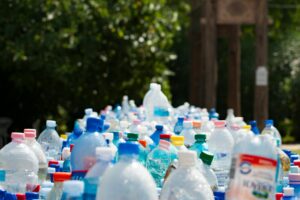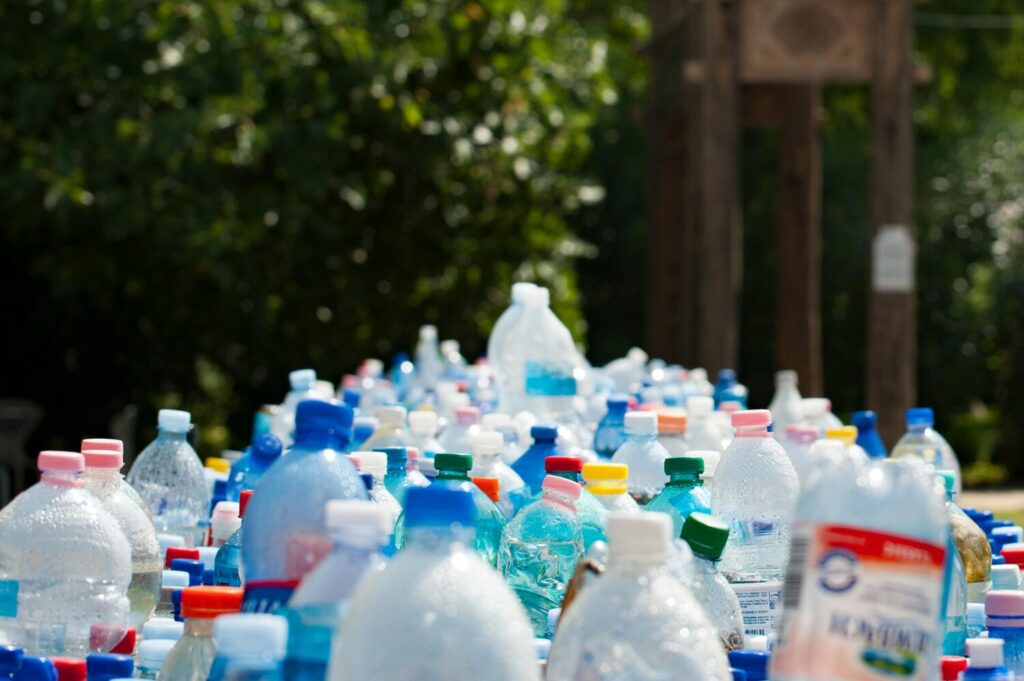
We have all heard how plastic is bad for our health and hurts the environment, so why do we still use it without thinking twice? Yes, it’s quick, easy and cheap. Glassware is more expensive and needs to be washed. That little extra work and money can go a long way for you and your child’s health. Not to mention a less wasteful world to live in. Lets break down the most popular plastic products and how they affect your health.
Polyethylene terephthalate (PET or PETE or polyester)
Uses: Bottles (water, soft drink, juice, beer, wine, mouthwash, salad dressing), peanut butter/jam jars, oven-ready and microwaveable meal trays.
Toxicity: PET may release antimony. Antimony trioxide is used as a catalyst and flame retardant in PET. The longer a liquid is left in a PET container, the greater the potential for release. Warm temperatures inside cars, garages, and enclosed storage areas may increase the release of antimony into the liquid. Antimony trioxide is considered a possible carcinogen.
Personal Trainer Suggestion: To be on the cautious side you want to avoid this one whenever you can. Especially if you think the bottle or container may have been exposed to any type of heat. A great alternative would be a glass or stainless steel water bottle or container.
High density polyethylene (HDPE)
Uses: Plastic bags (grocery), opaque milk, water containers, juice containers, bleach, detergent bottles, shampoo bottles, garbage bags, dishes, yogurt tubs, margarine tubs, cereal box liners, and some medicine bottles.
Toxicity: This type of plastic is relatively stable, making it a slightly safer plastic for food and drink use, although some studies have shown that it can release an endocrine disruptor nonylphenol (added to HDPE as a stabilizer). This is especially true when exposed to sunlight.
Personal Trainer Suggestion: Although this plastic is relatively safer for food and drink we would still suggest making the switch to glass or stainless steel bottle/containers. No need to take a chance with the possibility of release of endocrine disrupting chemicals.
Polypropylene (PP)
Uses: Food containers (ketchup, yogurt, cottage cheese, margarine, syrup, and take-out), medicine containers, straws, bottle caps, Brita filters, Rubbermaid and other opaque plastic containers, including baby bottles.
Toxicity: A relatively stable plastic, making it a slightly safer plastic for food and drink use, although it has been shown to release plastic additives (such as the stabilizing agent oleamide) when PP labware was used in scientific experiments.
Personal Trainer Suggestion: Relatively safe as long as you aren’t doing any lab experiments 😉
Polystyrene (PS) or Expanded PS (EPS)
Uses: Styrofoam food containers, egg cartons, disposable cups and bowls, take-out food containers, deli food plates and disposable cutlery.
Toxicity: PS food containers can release styrene, which is considered to be a human carcinogen and a brain and nervous system toxicant. Animal studies have shown adverse effects on genes, lungs, liver, and the immune system. Note that styrene is also present in second-hand cigarette smoke, off-gassing building materials, and car exhaust. The release of styrene from PS containers into food is increased when the food or liquid is hot and oily.
Personal Trainer Suggestion: Try to avoid this one as much as possible as it can release the brain and nervous system toxin styrene. Opt for reusable plates (stainless steel or ceramic) and utensils (stainless steel or bamboo) when having a picnic or eating at work. Try to bring a reusable container to restaurants for take-out or transfer the food over to a glass container as soon as you get home.
How Do I Know Which Type of Plastic I’m Using?
Just check the packaging, bottle or container you are using for one of the symbols listed below. The initials on there will tell you exactly which one it is. We only listed the most popular ones in this article, you may find different initials, we will put out another article soon about the rest of them 🙂
Conclusion
Polypropylene (PP) seems to be the most safe type of plastic if we had to pick one. Although we would still highly suggest making the switch to glass or stainless steel bottles, containers, and utensils to prevent the possibility of absorbing any harmful chemicals from these plastic products. Better safe than sorry 🙂
Written By:
Robert Jost
NSCA-CPT, ACE-CPT
Suggested Article:
coconut water
Suggested Video:
Take action… Now!
Training Aspects Personal Training and Sports Performance:
Training Aspects’ personal trainers and sports performance coaches want you to accomplish your goals. You, as the personal training client, are a reflection of our personal training and group training methods! We are here to help you accomplish all of your personal training goals! Our main training focus are people looking to increase performance, lose weight , lose body fat and increase lean muscle. Whether you live in Cherry Hill, Haddonfield,Marlton, or any of the other surrounding areas we are here to help you Move, Look and feel as you’ve always desired…
Visit us:
Inside of the Flyers Training Center
601 Laurel Oak Rd.
Voorhees, NJ 08043



